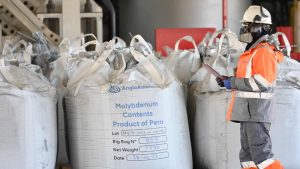After first-half profits surge, what next for the Barclays share price?


The Barclays (LSE: BARC) share price is well and truly back from the crushing it got in the 2020 stock market crash. We’re looking at a 270% climb over the past five years. And 59% in the last 12 months alone.
As if to justify investor confidence, the bank delivered on H1 performance. And it delivered big. It makes me wonder if those who sold out and took profits in the past few months might be missing out on more to come.
The half saw income rise 12% year on year to £14.9bn. Profit before tax improved by a full £1bn to £5.2bn, for a 24% jump. And that’s even after a £1.1bn impairment charge arising largely from Tesco’s retail banking business, taken over in 2024.
I’ve been looking for the answer to one key question since the 2008 banking crisis. Investment banking lay at the centre of the catastrophe. And the other UK high street banks dumped that business like a hot potato in the immediate aftermath.
Was Barclays right to go against the trend and stick with it? With investment banking accounting for £7.2bn of first-half income this time, I can only see that as a big yes. So far, at least.
Shareholder returns
The board also announced a new £1bn share buyback. Combined with a first-half dividend of 3p per share, CEO C. S. Venkatakrishnan added it up to “£1.4bn of total capital distributions in respect of the first half of 2025, a 21% increase year on year“.
The CEO pointed out that we’re only halfway through his three-year plan. Yet already, Barclays has “achieved over half of the c.£30bn planned UK risk weighted assets (RWAs) growth, half of the target income growth and realised two-thirds of the £2bn planned gross cost efficiency savings“.
The bank still aims to return at least £10bn in capital to shareholders over the 2024 to 2026 period. The dividend should keep level in total payment terms, with per-share gains boosted by buybacks.
If it all goes well, total income should reach £30bn in 2026. And we could be seeing a CET1 ratio of 13%-14%, indicating a company in a strong liquidity position.
Incoming threats
Let’s take a minute to look at what bumps might lie in the road ahead. The share price gains have lowered the forecast dividend yield to just 2.3%. That’s significantly below the 4.2% predicted for Lloyds Banking Group, the 4.8% potentially on offer from NatWest Group, and the sector-leading 5.2% inked in for HSBC Holdings.
I’m also wary of possible future costs and credit impairments. Especially as US consumer spending looks tight, and the property market there looks to be faltering. A forecast price-to-earnings (P/E) ratio of nine might be high enough, at least for now.
Still, despite the short-term risk, I think investors looking for long-term cash rewards and further share price growth could do well to consider Barclays — even if I now see a chance of a possible pause. But then, I think the same about HSBC, NatWest, and Lloyds.
The post After first-half profits surge, what next for the Barclays share price? appeared first on The Motley Fool UK.
More reading
- If you ‘sold in May and went away’, here’s what the same UK stocks would cost now
- Are we entering a golden era for Barclays shares?
- Are Barclays shares a no-brainer buy as first-half profits jump by £1bn?
- Are we looking at a golden age for UK bank stocks?
- Could the Barclays share price reach £5? Here’s what needs to happen
HSBC Holdings is an advertising partner of Motley Fool Money. Alan Oscroft has positions in Lloyds Banking Group Plc. The Motley Fool UK has recommended Barclays Plc, HSBC Holdings, and Lloyds Banking Group Plc. Views expressed on the companies mentioned in this article are those of the writer and therefore may differ from the official recommendations we make in our subscription services such as Share Advisor, Hidden Winners and Pro. Here at The Motley Fool we believe that considering a diverse range of insights makes us better investors.





